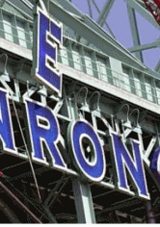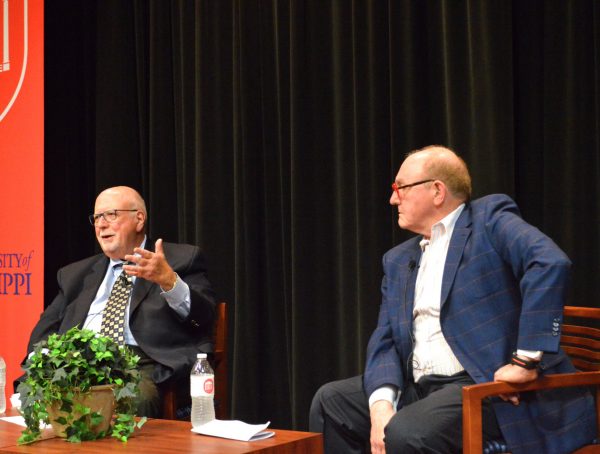Just when you think the broadcast news business couldn’t possibly be more about marketing than it already is, another deal comes to light that further fuzzes the line between journalism and advertising.
Remember when stations kept them separate? The idea was to protect the integrity of the news, in the belief that both audiences and advertisers would be drawn to a credible product. These days, that notion is beginning to seem almost quaint, as stations sacrifice their journalistic credibility for the sake of a few more bucks.
Take the case of WIBA-AM radio in Madison, Wisconsin, which blithely sold a Midwest bank the naming rights to its newsroom. Since January 1, the station’s newscasts have opened with these words: “From the Amcore Bank News Center..” And it’s not the first station to sell its newsroom’s name. Milwaukee’s WISN-AM sold its naming rights to PyraMax Bank more than a year ago. Both stations are owned by Clear Channel Communications, the largest radio group in the country.
Clear Channel’s public relations firm says the corporation had nothing to do with the deals and insists they are not the start of a company-wide trend. “These were local decisions made by local stations,” says a spokeswoman. But no one at headquarters seemed willing to second-guess the decisions, even after the Society of Professional Journalists called on the company to step in and stop the practice.
Clear Channel Radio-Madison Vice President Jeff Tyler doesn’t think there’s any reason for concern. “There are many examples of [selling naming rights] in broadcasting and in other industries,” he told the Wisconsin State Journal, “from stadiums to business schools.” That’s true enough, but a sports event or a building is not a newscast. When corporations brand events like the Chick-fil-A Peach Bowl and arenas like TD Banknorth Garden, home of the Boston Celtics, they’re buying exposure. When they put their names on a newsroom, they’re buying its reputation and, by extension, its credibility.
The stations say these deals won’t influence their news coverage, and the banks say they’ve been promised no special treatment so there’s nothing to worry about. Well, there is. At a minimum, attaching the name of a local business to a newsroom creates a perception problem. Listeners who get their news from the Amcore or PyraMax Bank newsroom might legitimately wonder how impartial its reporters can be when covering the banking industry, not to mention a story involving one of the banks themselves.
 Branding isn’t entirely benign even where sports teams are involved. Remember the Houston Astros’ embarrassing experience with Enron Field? Imagine the consequences for a newsroom that sells its naming rights to a company that later becomes tangled in scandal or tainted by corruption.
Branding isn’t entirely benign even where sports teams are involved. Remember the Houston Astros’ embarrassing experience with Enron Field? Imagine the consequences for a newsroom that sells its naming rights to a company that later becomes tangled in scandal or tainted by corruption.
Historians will point out that in the early days of network television news, some programs carried an advertiser’s brand. NBC’s nightly newscast was once called the “Camel News Caravan,” sponsored exclusively by the cigarette maker. But that was half a century ago, and there are plenty of good reasons not to turn back the clock. Here’s just one: Under Camel’s sponsorship agreement, NBC News couldn’t show “No Smoking” signs or shots of cigars. “What Camel wanted Camel got,” the late NBC News President Reuven Frank wrote in his book, “Out of Thin Air.”
Maybe the companies buying naming rights today won’t have that kind of control, but in a world where everything’s for sale, they have other options. This spring, Gannett’s KARE-TV in Minneapolis turned its long-running morning news program into “Showcase Minnesota,” copying a concept pioneered by Gannett’s Denver station more than a year ago. KUSA-TV’s “Colorado & Co.” looks and sounds like a local news-talk show, with hosts interviewing guests on a comfortable set. But it’s not what it seems. The “guests” from companies like Cedarlane Natural Foods or the Denver Design Center have to pay at least $2,100 for their five minutes of fame. Only at the end of the segment does the host reveal the pay-for-play arrangement.
The show’s executive producer, Dreux DeMack, says “Colorado & Co.” doesn’t pretend to be a news program and viewers don’t confuse it with one. But the expectations may be different in Minneapolis, where KARE converted an existing morning show produced by the news department into a paid shill-fest. While the original program, “KARE 11 Today,” wasn’t exactly hard-hitting, at least the content was chosen by the station. Now, it’s all for sale.
And then there’s KPHO-TV in Phoenix, where Dunkin’ Donuts coffee mugs recently turned up on the morning news set. The anchors don’t actually use them, I’m told, for fear of spoiling the camera shot of the logo.
It won’t stop there, I’m afraid. News just isn’t making money the way it used to. According to the Radio-Television News Directors Association/Ball State University annual survey, local TV newsroom profitability in 2005 was at its lowest ebb in nine years, with less than half of all newsrooms reporting a profit.
So brace yourselves. When it comes to selling out the news, we may not have seen anything yet.
Originally published in American Journalism Review, April 2006








